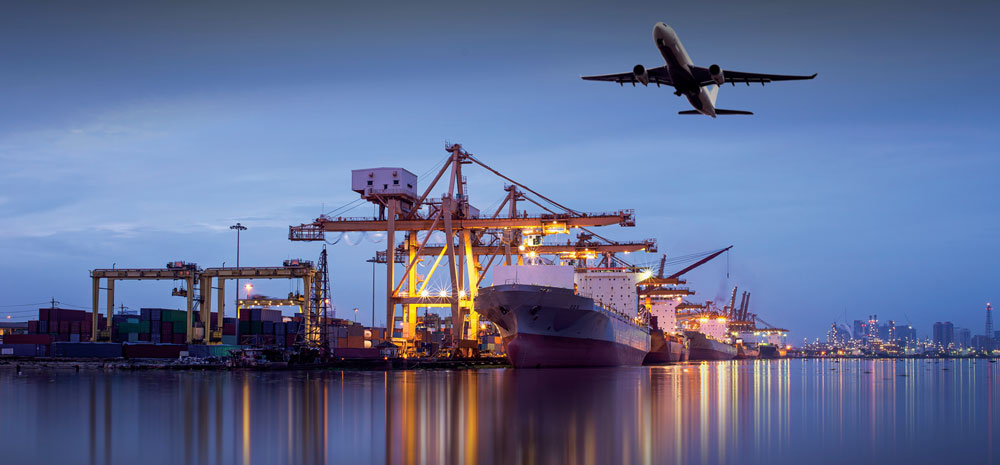



December, 2020 in Issue 4 - 2020, Markets
On 15 November 2020, following eight years of negotiations and countless delays, 15 countries in the Asia-Pacific region signed the world’s biggest trade agreement, the Regional Comprehensive Economic Partnership (RCEP) Agreement. The RCEP Agreement is an ASEAN-led free trade agreement (hereinafter, FTA), grouping the ten ASEAN Member States (i.e., Brunei-Darussalam, Cambodia, Indonesia, Laos, Malaysia, Myanmar, the Philippines, Singapore, Thailand, and Vietnam), and the five regional countries with which ASEAN already has free trade agreements, namely Australia, China, Japan, South Korea, and New Zealand (i.e., the so-called ASEAN+1 FTA partners, minus India).
The RCEP Agreement has the potential to transform the region into an integrated market of about 2.27 billion people (i.e., 30% of the world’s population), a combined GDP of USD 26.2 trillion (i.e., 30% of global the gross domestic product (GDP), and nearly 28% of global trade. The RCEP will open up opportunities for businesses, providing greater market access across all areas of trade – goods, services, and investments. The signing of the RCEP signals a strong commitment to keep markets open, to ensure supply chain connectivity in the Asia-Pacific region, and to provide much-needed support and optimism for job creation and economic recovery from the Covid-19 pandemic.
The RCEP builds on ASEAN’s bilateral FTAs with its key trading partners
The RCEP negotiations were launched in November 2012 by the ten ASEAN Member States and the six regional countries with which ASEAN already has free trade agreements with the intention of strengthening the regional economic architecture. In November 2019, India withdrew from the RCEP negotiations, noting that its key issues and concerns were not being adequately addressed. Nevertheless, RCEP Parties kept the door open for India through the Ministers’ Declaration on India’s Participation in the Regional Comprehensive Economic Partnership (RCEP), which acknowledges the strategic importance of India’s participation to establish stronger economic linkages and connectivity for the benefit of all people in the region and further development of the global economy. Notably, the RCEP links together China, Japan and Korea, which are Asia’s first, second, and fourth-largest economies, respectively, providing the push and momentum to finally conclude the stalled China-Japan-Korea FTA talks.
Comprising 20 chapters, with a total of 17 annexes and 54 market access schedules, the RCEP Agreement is a modern and comprehensive FTA covering commitments in the areas of trade in goods, trade in services, investment, dispute settlement, and economic and technical cooperation. Importantly, the RCEP Agreement goes beyond the existing agreements concluded by the ASEAN Member States with Australia, China, Japan, South Korea, and New Zealand (hereinafter, ASEAN+1 FTAs) and includes commitments on electronic commerce, intellectual property, Government procurement, competition, and small and medium-sized enterprises (SMEs). The RCEP Agreement intends to provide new trade and investment opportunities for businesses.
The RCEP Agreement provides important benefits to traders in the Asia-Pacific region
Studies indicate that the RCEP Agreement could boost global trade by USD 500 billion in the next ten years. However, this requires that businesses do take advantage of the new commitments by the Parties, once the RCEP is ratified and starts being implemented.
The RCEP Agreement aims at ensuring transparent and predictable trade rules. More specifically, the RCEP Agreement reaffirms the Parties’ WTO commitments on the publication and notification of their trade regulations, which aims at addressing a key business concern, namely the lack of information on non-tariff measures (NTMs). Despite the transparency system not being as ambitious as that of the ASEAN Trade in Goods Agreement (ATIGA), Article 2.18 of the RCEP Agreement provides an innovative platform for Parties to conduct technical consultations on NTMs that adversely affect trade between them, establishing a timeframe within which the consultations should be resolved (i.e., 180 days from the request of technical consultations), which can be shortened due to the urgency of the matter or if the consultations concern perishable goods. Moreover, these discussions must be transparent and must provide any other RCEP Party the opportunity to join the consultations whenever they have an interest in doing so, subject to the consulting Parties’ consent.
Businesses will be able to benefit from substantial cost-savings under the RCEP, with the Parties committing to the gradual removal of Customs duties on about 92% of products over 20 years in accordance with each Party’s Schedule of Tariff Commitments (Annex I of the RCEP Agreement), while some tariff lines can be traded duty-free upon its entry into force. This will likely encourage businesses to source raw materials from other RCEP Parties, increasing foreign direct investments (FDI) into the region and fostering regional value chains.
Under the RCEP Agreement, the Parties negotiated exclusions for sensitive products from tariff reductions, particularly for agricultural products and other regulated goods. For instance, Indonesia has committed to eliminating tariffs on 91% of its tariff lines in the coming years, while the other 9% have been designated as sensitive products, which means that, inter alia, rice, weapons, and alcoholic beverages are not subject to the liberalisation commitments. Japan excluded its key agricultural products, namely rice, wheat, beef, pork, dairy, and sugar from liberalisation in order to protect domestic farmers from a potential influx of more competitive imports. More specifically, Japan will abolish tariffs on 56% of agricultural products imported from China, 49% of those from South Korea, and 61% of agricultural products from ASEAN Member States, as well as from Australia and New Zealand. Additionally, certain Parties will grant market access through tariff-rate quotas (TRQs) to other Parties. For instance, vis-à-vis China, Vietnam does not exclude any products from liberalisation, but has established a list of 30 products that will be subject to a lower (in quota) tariff-rate, but then subject to a higher tariff-rate once the respective quota is exceeded.

Unified rules of origin
Under the RCEP Agreement, businesses will benefit from preferential treatment under a unified set of rules and procedures when trading their products between and among RCEP Parties. Until now, diverging rules and procedures, particularly regarding origin criteria and certification procedures, under various FTAs in the region, had led to complex rules, which discouraged traders to take advantage of them. Most notably, the RCEP Agreement will provide for unified rules of origin where, essentially, the criteria to determine whether a product may benefit from preferential treatment under the agreement are the same for all RCEP Parties. Moreover, businesses will only need one origin certification document to cover all RCEP Parties, which should significantly expedite the processes of verifying origin qualification and documentation. The unified rules of origin under the RCEP are expected to facilitate supply-chain management, reduce transaction costs borne by businesses for trading with multiple countries in the wider region, as well as create a more stable environment for trade.
The chapter on electronic commerce
The RCEP Agreement contains a chapter on electronic commerce, an important innovation compared to the existing ASEAN+1 FTAs and the ASEAN Trade in Goods Agreement (ATIGA). While it may not be as sophisticated as the chapter on electronic commerce in the Comprehensive and Progressive Agreement for Trans-Pacific Partnership (CP-TPP), which links Australia, Brunei, Canada, Chile, Japan, Malaysia, Mexico, New Zealand, Peru, Singapore, and Vietnam, it still contains important elements. The inclusion of this chapter aims at enhancing the regulatory environment for businesses trading digitally in the region and at supporting consumers’ confidence in online transactions. In essence, the chapter on electronic commerce sets out provisions that encourage the RCEP Parties to improve the administration and relevant processes for trade using electronic means. The chapter also requires Parties to adopt or maintain a legal framework that creates a conducive environment for the further development of electronic commerce, which is supposed to cover areas such as online consumer protection, online personal information protection, transparency, and paperless trading.
Pursuant to Article 12.2 of the RCEP Agreement, the Parties agree to refrain from imposing Customs duties on electronic transmissions, in line with the WTO’s moratorium on e-commerce. Additionally, Article 14.14 of the RCEP Agreement prohibits data localisation requirements, unless they are necessary to achieve a Party’s public policy objectives or to protect its security interests.
Next steps towards the effective implementation of the RCEP
After its signing, the Parties to the RCEP Agreement will commence their respective domestic processes to ratify the agreement. However, the RCEP Agreement will only enter into force once six of ten ASEAN Member States and three of the five other Parties have deposited their instruments of ratification, acceptance, or approval with the ASEAN Secretary-General. The RCEP Agreement is, therefore, not expected to come into effect before the end of 2021 or the beginning of 2022.
The increased economic opportunities will likely also increase competition in the region. During this ratification period, it is, therefore, critical for companies to prepare and strategically plan on how to leverage the trade preferences that the RCEP Agreement will deliver to reduce trade costs and gain competitive advantages in the RCEP Parties’ markets. Such assessment should include determining the tangible benefits of the RCEP Agreement vis-à-vis the existing ASEAN+1 FTAs, which will remain effective even as the RCEP enters into force, as well as reviewing their current supply chains to determine if there is an opportunity to expand into the region’s growing markets.
Maria Esperanza Alconcel, Ignacio Carreño, Fabrizio De Angelis, Simone Dioguardi, Tobias Dolle, Michelle Limenta, Alya Mahira, Lourdes Medina Perez and Paolo R. Vergano contributed to this issue.
27 November 2020 – Trade Perspectives© – FratiniVergano